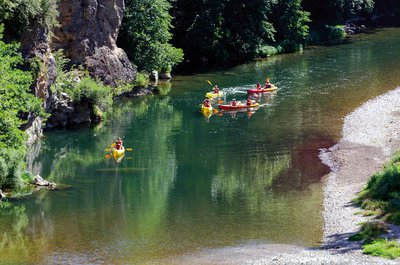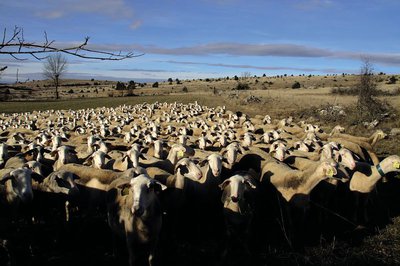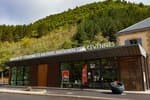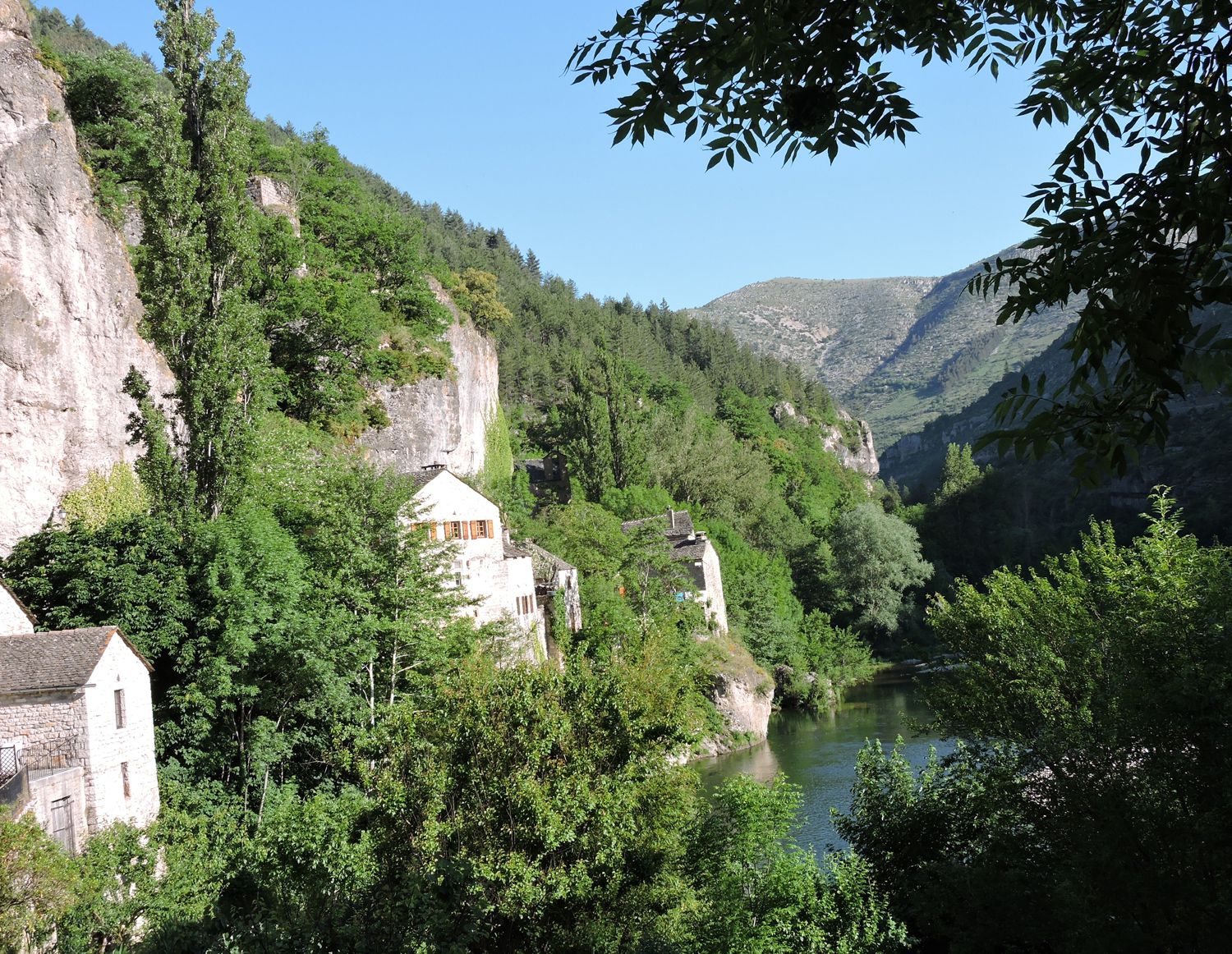
From Ispagnac to the mediaeval village of Sainte-Enimie.
2 steps
15 points of interest

Chevet de l'église d'Ispagnac - cevennes-gorges-du-tarn  Architecture
ArchitectureIspagnac church
St-Peter’s Church in Ispagnac is one of the finest examples of Romanesque architecture in Gévaudan. Built in the 12th century, it is dedicated to Saint Peter and Saint Paul. The understated facade of this bulky-looking building has a simple gate with three semi-circular arches topped by a rose window that lets light into the nave. Once inside, you discover a simple and airy architecture. A sound-and-light show helps you to explore. To get the fullest impression of the architecture, you need to leave the building and walk around it to see the apse and its décor.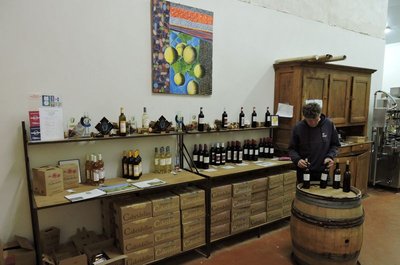
La cave viticole d'Ispagnac - cevennes-gorges-du-tarn AgricultureThe vintners of Ispagnac
In 2003, Sylvain Gachet, from Savoy, reintroduced grapevines to Ispagnac and Florac, planting six hectares of terraced land. On soils of clay/limestone and schist, he attempted to breathe new life into the Domaine de Gabalie. In 2006, Elisabeth Boyé and Bertrand Servières set up as vintners in the Tarn gorge, also under the stimulus package bringing vineyards back to the valley. They cleared the land of the bartas (brambles) which had invaded almost all the parcels, and rebuilt the dry-stone walls before planting almond trees, vine peaches and five hectares of grapevines: the Domaine des Cabridelles was born. The winemakers share a cooperative cellar in Ispagnac, which is also a sales outlet. Why not make a short stop to try the wines (the cellar is next to the car park by the state school (école publique).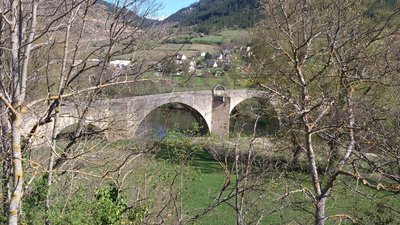
Pont de Quézac - © CC Florac Sud Lozère  Architecture
ArchitectureQuézac Bridge
This bridge crossing the river Tarn gives access to the village of Quézac, located on the left bank. Around 1350, Pope Urban V decided to fund its construction to facilitate pilgrims' access to the collegiate church of Notre-Dame de Quézac. It was finished in the 15th century. Its history is punctuated by partial destruction in floods, and by more or less solid rebuilding. It became a listed monument on 27 August 1931.
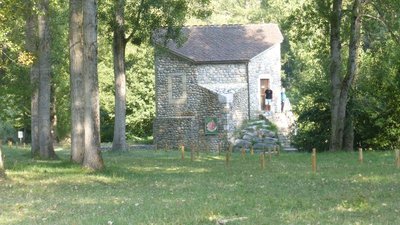
Source de Quézac - © Nathalie Thomas  Water
WaterQuézac mineral water
Quézac mineral water emerges naturally from the Diva spring, near the entrance to the village, in exceptional surroundings which have been naturally protected for centuries. This pleasant-tasting water is rich in mineral salts and trace elements and is also well-known to be beneficial for the stomach. The spring's water actually comes from Mont Aigoual. According to scientific studies, it takes 30 to 40 years for it to re-emerge in Quézac, after first settling in aquifers, where it acquires its effervescence naturally (rare in France).

Château de Charbonnières. - © OTGCC nc  Architecture
ArchitectureThe Château de Charbonnières
In a bend of the Tarn downstream from the village of Montbrun stands the Château de Charbonnières. While the former castel has lost some of its defensive elements, it has nevertheless preserved a knightly characterand traces of many historical episodes of the Tarn valley. It is first recorded in the 13th century. Its defensive role was tightly linked to a whole “fortified system” downstream of Ispagnac, which consisted of Quézac, Javillet, La Roche, Rocheblave, Montbrun, Castelbouc, Prades and Sainte-Enimie.
The château has three rectangular //buildings arranged in a horseshoe shape around an internal courtyard. The facade overlooking the Tarn has a square tower that dominates the river. Access to the internal courtyard is via gates under a semi-circular arch. From the courtyard, a stone staircase leads up to the chapel, whose doorways is decorated with fleur-de-lys. The modest interior has a ribbed vault framing a keystone engraved with the arms of the Montesquiou family, lords of Charbonnières from the 13th century onwards. The other parts of the residential building have handsome fireplaces, a monumental staircase and fine vaulted halls. In the 17th and 18th centuries, the château became the property of the Volonzac Malespina family and, in the 19th century, of the Boutin family. It is not open to the public.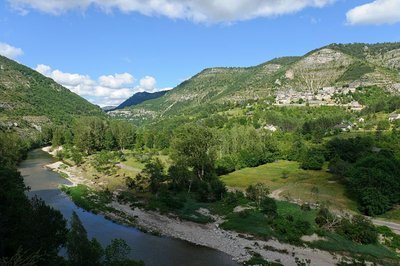
Les gorges du Tarn et le village de Montbrun - BOUISSOU Arnaud / TERRA Ministère de l'Environnement  Water
WaterNot always a docile river!
For 52 km, from the point it enters the canyon at Quézac to Le Rozier, the Tarn has no overground tributary. However, it is fed by about 170 karst springs stemming from subterranean aquifer networks. These springs release the rainwater absorbed by the avens, dolines and fissures of the Causses plateaux. When reserves are high, the water gushes with great force from the karst environment. Locals say that “the corks are popping”. In the event that the tributaries of the Tarn (the Mimente and Tarnon) rise and add to the springs, the time will have come to move the furniture upstairs.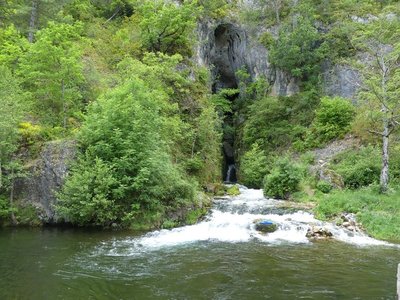
Résurgence de Castelbouc - nathalie.thomas  Water
WaterThe spring of Castelbouc
The vast spring as you enter the hamlet has four outlets, including one at the back. These openings, out of which water surges during heavy rain, reinforce the translation of the Occitan bouc as bouches (“mouths”). All springs are fed by a catchment area of varying size. Here, the catchment area is the sector of Aven du Pic de l’Usclat, Aven du Loup (Cros garnon) and Aven du Crapaud (Fretma) on the Causse Méjean plateau.
Castelbouc - Bruno Daversin  History
HistoryThe strange legend of Castelbouc
For you to judge…
The etymology of Castelbouc is castel blanc, meaning “perched on the rock” in Occitan.
Legend has it that during the Crusades the castle’s lord was the only man to have remained behind in this little hamlet of dwellings built against the cliff. He had many female visitors, and it was important to him to satisfy their needs. Unfortunately, the Crusade was so long that he was unable to keep going to its end. When his soul left his body, an enormous he-goat was seen hovering over the castle tower… Ever since, a bleating sound followed by strange murmurings can be heard on the summit. This is the legendary origin of the name of Castelbouc...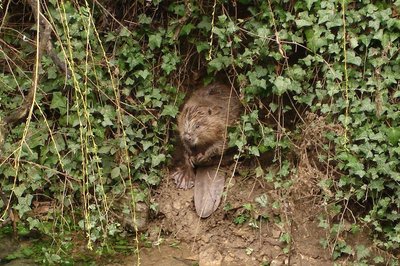
Castor - © OTGCC nc  Fauna
FaunaThe beaver
Proof that I have been here might be a tree carved into a pencil shape; pieces of bark; wood chips; a heap of branches in the water; back or front paw prints in the sand. I’m the Eurasian beaver. I live near water. I’m active mostly at night, and sometimes at dawn and dusk if no-one disturbs me. From the Middle Ages (11th century) to the 19th century, times were hard for us. We were hunted by humans for our flesh, fur and because we were thought a nuisance. In the early 20th century, we had disappeared from many parts of France. Today, things are better – we live alongside and in the Tarn again.
Le Pont de Ste-Enimie - © OTGCC nc  History
HistoryThe bridge
Finally a bridge over the Tarn!
In the 13th century, the Benedictine monks of Sainte-Énimie built a bridge to replace the ford, or possibly a previous, more precarious construction. The new bridge linked Sainte-Énimie to the Causse Méjean plateau, where the Benedictine community owned land. Commerce and trade with Lower Languedoc (wool, woven products, wine) boomed. The village soon became an essential point on the important pilgrim route linking Le Puy-en-Velay with Aniane, via Saint-Guilhem le Désert. In the Middle Ages, it was rare to find so many bridges that could be crossed with carts and other large means of locomotion. The monks were true visionaries: today, the bridge is the only access to the Causse Méjean from the Tarn gorge that is authorised for buses and lorries weighing more than 19 tonnes (on the D986 linking Mende with Meyrueis).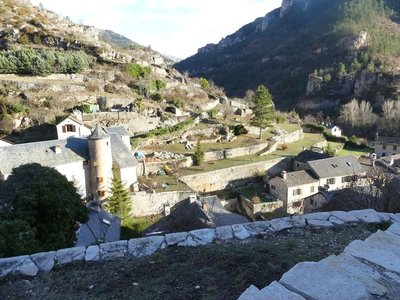
Les terrasses - nathalie.thomas AgricultureThe terraces
Locals have transformed the rocky slopes into hanging gardens by making use of the smallest of flat spaces. They carried the soil up in baskets or sacks on their backs. This is where they would have planted their vegetables and fruit trees (peach, walnut, almond). Until the early 20th century, almond trees were the “great resource” that made good use of soils too poor for other crops.
Until 1851, there were 54 hectares of grapevines for 850 inhabitants. The vineyards clung to 45-degree slopes, which made work difficult. The low yield, disease and mechanisation were all factors in the abandonment of this crop. The municipality of Ispagnac reintroduced vines in 2003 when a winemaker settled there; a second settled in Blajoux in 2006.
Domaine de Boisset - nathalie.thomas  History
HistoryDomaine des Boissets
The stone framework of several windows suggests that the first buildings were built as early as the 15th. The farm was operational until 1960.The hamlet consists of six buildings, houses, outbuildings and sheepfolds, in the typical Caussenard style. The internal courtyard was closed off by walls that were much higher than they are today. A bread oven, cisterns and threshing floor complete the complex, showing that the inhabitants lived in autarky.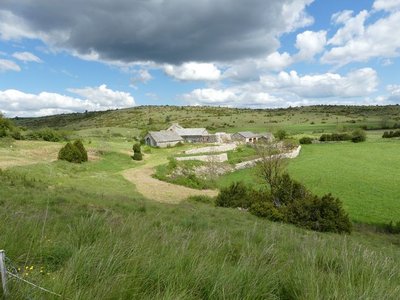
Jouanas - nathalie.thomas  Architecture
ArchitectureTonnas and Nissoulogres
These buildings have been turned into homes or holiday homes. They were once baraques or jasses, built by the inhabitants of the valleys to house people and livestock for a few weeks in the summer: the former harvested the grain they grew in the dolines, the latter grazed the summer pastures.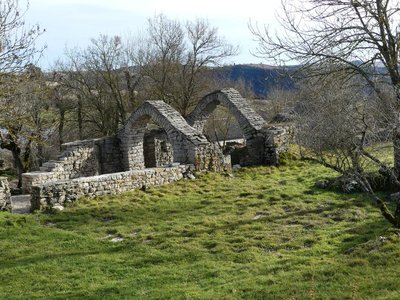
Voûte du Mas André - Nathalie Thomas AgricultureMas André
Mas are estates or small hamlets. Currently, two families of livestock farmers live in Mas André where they raise sheep for meat (500 to 600 animals). As you leave the hamlet, do stop in front of a complex of ruins with superb stone vaults. Vaulting was often used on both the lower and upper floor, and for both attics and to. The absence of water and of timber for roof structures, the fear of house fires and the abundance of stone explain this type of construction. In fact, a wooden roof could not carry a covering made of limestone tiles – it is too heavy (400 to 500 kg/m²).

Haie autour du Mas André - C-C Florac - Sud Lozère  Flora
FloraHedges
Hedges (boxwood or thorn bushes) were much used by farmers until the early 20th century to protect crops, flora and fauna, and delimit plots of land. They are the preferred nesting sites of many breeding or migrating birds. They also serve as a hide, not only for birds of prey such as buzzards, sparrowhawks or harriers, but also for insect-eating bids like the Hodgson's redstart and shrike. The berries of certain shrubs (sloe, juniper and dog rose) turn these hedges into larders for seed-eating birds: thrushes, northern grosbeak-canary, ortolan buntings, etc.
Description
- Day 1: departure from Ispagnac on the Tarn gorge path (waymarked yellow and green) for 17 km, to Sainte-Enimie
- Day 2: return from Sainte-Enimie to Ispagnac over 18 km: yellow waymarks to Les Boissets, then on the GRP Tour du Sauveterre (waymarked yellow and red) to Ispagnac.
- Departure : Ispagnac
- Arrival : Ispagnac
- Towns crossed : Ispagnac and Gorges du Tarn Causses
Forecast
Altimetric profile
Recommandations
Information desks
Tourism office Cévennes Gorges du Tarn, Ispagnac
Place de l'Église, 48320 Ispagnac
This office is part of the National Park's associated tourist-information network, whose mission is to provide information on, and raise awareness of, the sites and events as well as the rules that must be observed in the National Park's central zone.
Open year-round
Tourism office Cévennes Gorges du Tarn, Sainte-Enimie
village, 48210 Sainte-Enimie
This office is part of the National Park's associated tourist-information network, whose mission is to provide information on, and raise awareness of, the sites and events as well as the rules that must be observed in the National Park's central zone.
Tourism'house and national Parc at Florac
Place de l'ancienne gare, N106, 48400 Florac-trois-rivières
This office is part of the National Park's associated tourist-information network, whose mission is to provide information on, and raise awareness of, the sites and events as well as the rules that must be observed in the National Park's central zone.
On site: exhibitions, video projections, events and shop Open year-round
Transport
Bus line "Florac – Mende”
Year-round daily service Monday to Saturday morning (except bank holidays)
Bus line “Ispagnac – Florac – Alés” Monday to Saturday from 15 April to 31 October
Bus line “Florac – Sainte-Enimie – Le Rozier”, every day in July and August
https://lio.laregion.fr/
Access and parking
Parking :
Calculateur d'itinéraire Lio
Utilisez le calculateur liO pour organiser votre trajet en région Occitanie.
Autres régions
Calculez votre itinéraire en Auvergne Rhône Alpes sur Oùra
Biodiversité autour de l'itinéraire
Report a problem or an error
If you have found an error on this page or if you have noticed any problems during your hike, please report them to us here:

